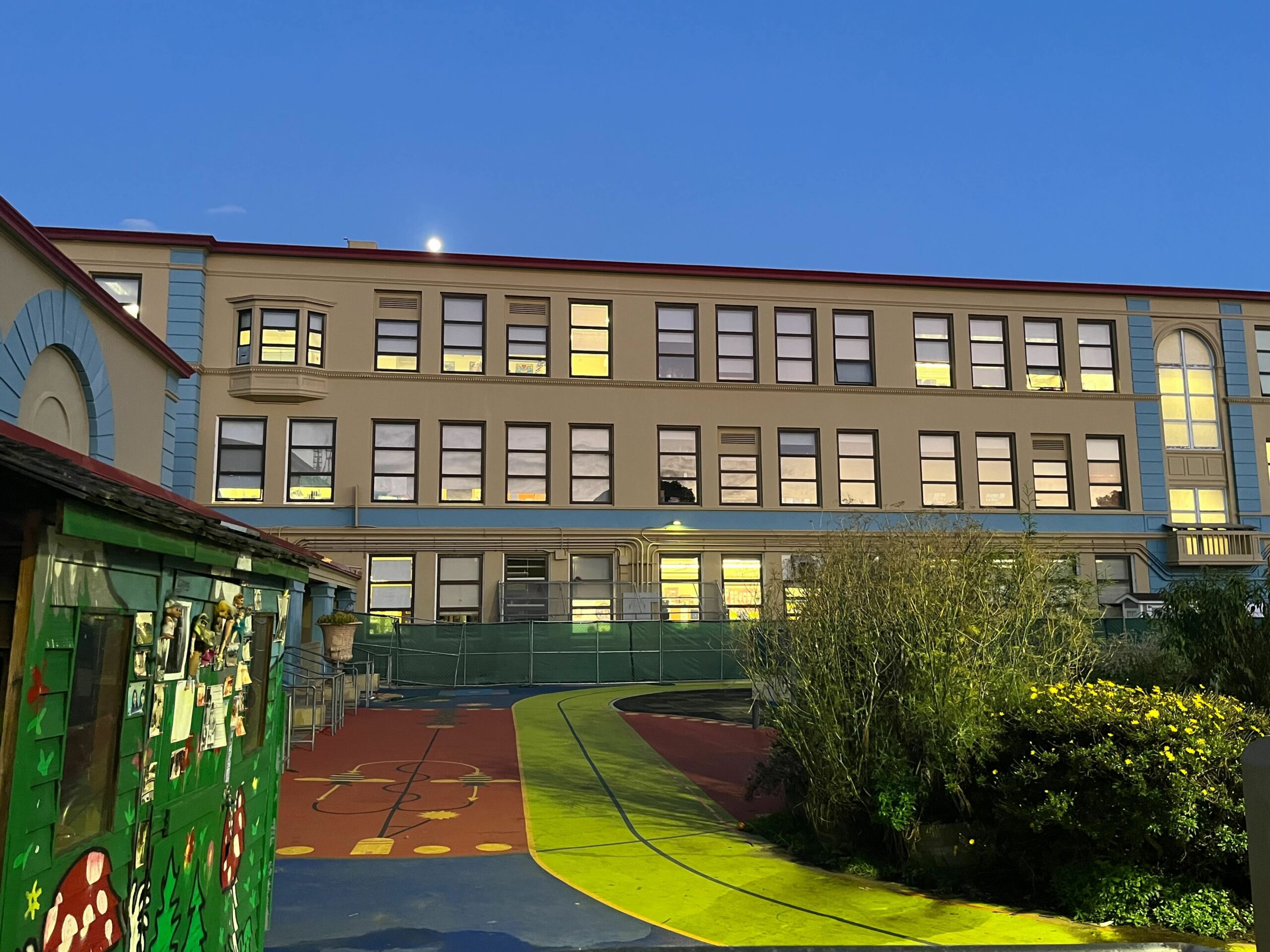Once lead and arsenic was found in the soil of Buena Vista Horace Mann K-8 Community School, one of many questions for staff and families became: What about the water?
In response to those concerns and fears over whether the toxins have harmed students, the San Francisco Unified School District told The Standard it is arranging for the SF Public Utilities Commission to test water outlets at the Mission school with troubled building history. The most recent test in 2018 showed the campus was under the allowed levels at 5 parts per billion (ppb), officials say.
“If an outlet tests over 5 ppb, it will be immediately taken out of service,” SFUSD spokesperson Laura Dudnick said. “We will notify families and staff of the results, and implement remedial action as necessary.”
The concerns were heard at a school community meeting earlier this week after the school discovered lead and arsenic in “higher than acceptable levels” in the soil from 2 feet under the campus garden. Subsequent testing showed that the hazardous substances were not present at high levels in the top 6 inches of soil, the district said.
Broader testing is underway to get a better idea of the scope of contamination and determine what to do about it.
But long before the soil discovery, teacher Sara Mokhtari Fox said she’s been afraid to use the water, which sometimes spurts out in shades of orange. Because of that, she gets water from a kindergarten teacher who has a Brita filter—or she treks across the street to re-up from Arizmendi Bakery.
“It’s just atrocity after atrocity,” said Mokhtari Fox, a BVHM rep for the teachers union. “We as students and teachers have had to experience abusive levels of dysfunction and neglect. The students of the Mission deserve more.”
The toxins were identified in the course of a hard-fought $40 million renovation that was fast-tracked after frustration over building conditions boiled over in 2021. A gas leak was met with a delayed response, a student was shocked by a faulty electrical outlet, ceiling tiles fell and rodents were a common sighting—to name just a few problems the campus has grappled with lately.
While Mokhtari Fox said the district has been much more transparent lately, she wants someone outside SFUSD to test the soil and water to err on the safe side. She was also encouraged by SFUSD Superintendent Matt Wayne’s offer to find more resources for the embattled school but knows it just comes with more work for staff.
SFUSD pledged to reimburse families for any out-of-pocket expenses incurred by testing for health impacts. But with many students at the school lacking health insurance, educators said immediate testing with no upfront costs should be brought to them.
Families also sought access to clean water in the meantime, as well as personnel to help with the logistical nightmare of closing the school garden. The beloved garden was used all day, for classes or activities at a school with already limited space. Now, it interferes with an emergency exit plan, according to community school coordinator Nick Chandler.
“They are absolutely heartbroken,” Chandler said of the students. “It went from the most desired, healthy, healing part of the school to a place the kids are afraid of. It’s another in a long string of unacceptable realities we’re asking our kids and families to just deal with.”
BVHM parent Sam Murphy told her second-grader and sixth-grader to under no circumstances drink water at school. Instead, they’re doubling up on water bottles.
“They’re totally right that they have to do more testing before they can do the cleanup,” Murphy said. “I have a big problem that when they found the lead they didn’t immediately test the water. This is way too much of a burden for the district.”
SF Supervisor Hillary Ronen, whose district includes BVHM, said her office was looking into using some leftover city funds for additional analysis of the school’s soil.
“I think BVHM has sort of lost faith in just blindly trusting leadership and wants to know they’re safe with an independent verification,” Ronen told The Standard. “As long as [SFUSD] is being responsive, that’s all I ask. There’s a bunch of people in the city, me included, who cannot wait to help.”
